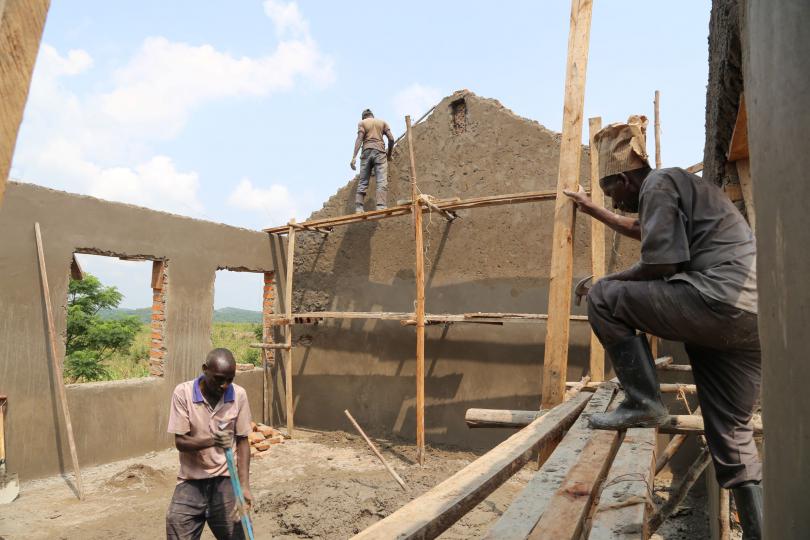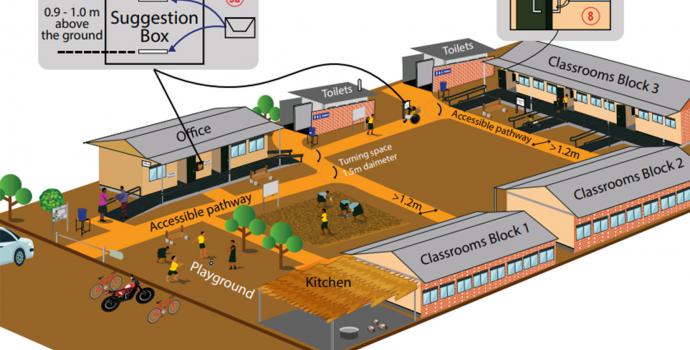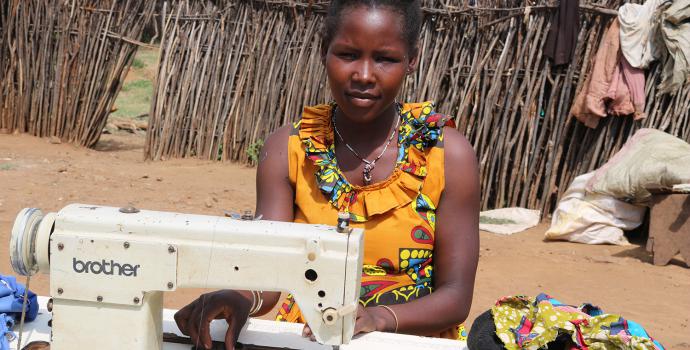In Uganda, Education Cannot Wait

Last year, Uganda launched its Education Response Plan for refugees and host communities – the first plan of its kind worldwide. It sets out how we can empower more than half a million children by helping them enrol in school and access quality education. Soon after this ambitious plan was launched, Education Cannot Wait (ECW) introduced its first Multi-Year Resilience Programme to support it, heralding a new way of working more collaboratively, inclusively and sustainably.
The needs are enormous. Uganda currently hosts nearly 1.4 million refugees – the third highest worldwide - and most of these refugees have fled from the terrible conflicts in South Sudan and eastern DR Congo. Shockingly, more than 60% of them are children, and at the start of the year more than half of these children were out of school.
The programme, for which ECW provides $11 million for the first year, works in 9 of Uganda’s 12 refugee-hosting districts. It’s run through a consortium – which is hosted and coordinated by Save the Children – made up of multiple partners who each bring their varied strengths to the table. The aim of this way of working is to maximise the strength of each of these individual partners and achieve a synergy between them.
BRINGING TOGETHER DIFFERENT EXPERTISE
One of the partners of this programme is Humanity & Inclusion (HI), a global expert on making services more accessible for children with disabilities. They specialise in supporting these children who often have to drop out of education in Uganda as their learning environment is not adapted to their needs.
HI works in schools alongside other consortium partners to identify and assist children with specific needs. They also train and mentor programme staff and teachers to adapt their learning environment; equip schools and adapt their learning material to be inclusive. For example, they can provide braille textbooks or even provide children with rehabilitative services and assistive devices such as hearing aids and wheelchairs. They also advise other consortium partners to ensure that their school facilities are accessible to children with disabilities.
HARMONISING APPROACHES
The ECW programme aims to combine technical and operational approaches harmoniously between partners, allowing the programme to be more effective in delivering quality education, without reinventing the wheel.
Technical Task Teams, under the Education in Emergencies Working Group, are addressing various issues. Some examples include the language of instruction in classrooms (there are often numerous languages spoken in one class) and developing a standardised training package for teachers on working with children with disabilities.
Using ECW funding, an Accelerated Education Programme (AEP) curriculum has been reviewed and standardised with the government’s National Curriculum Development Centre (NCDC). All AEP teachers in the country have now been trained on the revised curriculum and the Norwegian Refugee Council is leading the work with NCDC to develop adapted teacher guides and text books.

Above: Save the Children is constructing new classrooms in Rwamwanja refugee settlement as part of the ECW programme
SUSTAINABLE AND LOCALISED
Education Cannot Wait was born out of the Grand Bargain, an agreement between donors and aid providers to improve the sustainability and effectiveness of humanitarian aid. One commitment from the agreement includes supporting the localisation of programmes and directing an increasing share of funding to local and national responders.
The programme itself funds four local Ugandan partners with strong community relations. ELECU, for example, teaches girls how to make their own reusable sanitary pads from affordable local materials. Adolescent girls frequently tell us that the lack of sanitary pads and facilities is one of the main reasons for dropping out of school.
Working in partnership with local or national organisations improves the quality of the programme, but it also provides more sustainable development and capacity building. Street Child partners with African Women and Youth Action Development (AWYAD) in a three-pronged approach allowing them to co-create the project design and delivery; prioritise community-focused and grassroots collaboration; and create a 12-month tailored capacity development plan.
In order to create long-term sustainability, the government of Uganda is the most crucial partner. Every term, each district’s Education Office and Inspectorate of Schools conducts a monitoring and support supervision visit to the target schools. The Centre Coordinating Tutors – the government officials responsible for the training and quality of teachers – co-facilitate training with the NGO partners.
IMPACT FOR CHILDREN
The ECW programme is coordinated by an in-country Consortium Management Unit hosted by Save the Children. It includes dedicated technical expertise on education, child safeguarding and monitoring and evaluation, which all act as a shared resource to support the partners. This means that the programme can be agile and adapt to needs on the ground, as well as provide hands on support while retaining an overview of all activities. When innovative approaches that are working well are identified, these can be shared with other organisations in different locations.
The programme is also building infrastructure to help meet the massive shortage of facilities (with 139 new classrooms constructed or underway so far). It is also distributing vital school materials such as exercise books and stationery.
In the first school term the ECW programme directly benefited more than 46,000 refugees and host community children, and indirectly benefited 114,500 more children through recruiting teachers, paying their salaries and supporting their professional development.
When the Education Response Plan was designed in 2018, the enrolment rate for primary school stood at 58%. This figure is now 69%. This is a sign of huge progress in terms of increasing all refugee children’s access to a basic education.
The initial signs in Uganda show that this model of collaboration and coordination is improving the quality of learning and scale of inclusive access to education in one of the world’s biggest refugee crises.
This programme is being implemented by: African Women & Youth Action Development (AWYAD), AVSI, Catholic Relief Services, Education Local Expertise Centre Uganda (ELECU), Finn Church Aid, Humanity & Inclusion, Jesuit Relief Services, Luigi Institute of Higher Education, Norwegian Refugee Council, Palm Corps, Plan International, Save the Children, Street Child, War Child Canada, Windle Trust International, and ZOA




